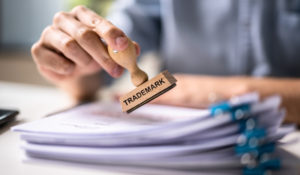In today’s rapidly changing business landscape, trademarks protect brand identities and intellectual property. As the business world evolves, trademark law must adapt to address emerging trends and challenges. In this article, we will explore how trademark law responds to these developments, and we will also touch on the essential steps of how to get a trademark through registration.
The Significance of Trademarks
Trademarks are essential business assets, serving as identifiers of the source and quality of goods and services. They symbolise trust and brand recognition, often representing years of hard work and investment. Trademarks help consumers make informed choices and create a sense of loyalty to a particular brand.
The Digital Transformation
One of the most significant emerging trends is the digital transformation of commerce. The rise of e-commerce platforms and online marketplaces has expanded the reach of businesses, allowing them to connect with consumers worldwide. However, this shift also poses challenges for trademark law.
Domain Names and Online Branding
The proliferation of websites and domain names has led to trademark disputes over online branding. Businesses must be vigilant in protecting their trademarks in the digital space. Registering domain names that match their trademarks and monitoring online activity for potential infringement are crucial steps.

Social Media and Branding
Social media platforms have become powerful tools for brand promotion and communication. However, they can also be breeding grounds for trademark misuse. Trademark owners must monitor social media channels for unauthorised use of their marks and take action when necessary.
Counterfeiting in the Digital Age
The ease of online selling has also given rise to counterfeiting on a global scale. Not only do counterfeit products hurt respectable companies, but they also put customers at risk. Trademark law has responded by providing mechanisms for enforcing trademark rights against counterfeiters and protecting consumers from fake products.
International Expansion
Globalisation continues to drive business expansion across borders. As businesses expand internationally, trademark law must adapt to address the complexities of protecting trademarks in multiple jurisdictions. International trademark registration systems, such as the Madrid Protocol, facilitate obtaining trademark protection in various countries.
How to Get a Trademark: The Basics
One of the most important steps in giving your brand legal protection is trademark registration. Here are the basic steps on how to get a trademark:
- Trademark Search: Conduct a comprehensive trademark search to ensure that your desired trademark is available for registration and does not infringe on existing trademarks.
- Identify Goods and Services: Clearly define the goods or services associated with your trademark. Certain categories of products and services are covered by trademark registration.
- Prepare and File the Application: Prepare a trademark application that includes the name/logo you want to trademark, the relevant class of goods or services, and the basis for filing (e.g., current use or intent to use).
- Filing Fee: Pay the required filing fee, which varies depending on the jurisdiction and the number of classes you’re registering.
- Examination: The trademark office will examine your application to meet the requirements.
- Publication: If your application is approved, it will be published for a specified period, during which third parties may oppose the registration.
- Registration: If there are no oppositions or other issues, your trademark will be registered, and you will receive a registration certificate.
Trademark Law’s Role in Emerging Trends
Trademark law plays a vital role in addressing the challenges posed by emerging trends:
- Protection in the Digital Space: Trademark law provides avenues for protecting trademarks in the digital realm. Domain name disputes are resolved through mechanisms like the Uniform Domain-Name Dispute-Resolution Policy (UDRP), which allows trademark owners to reclaim domain names infringing on their trademarks.
- Social Media Enforcement: Trademark owners can enforce their rights on social media platforms by reporting trademark infringement.
- Anti-Counterfeiting Measures: Trademark law empowers rights holders to take legal action against counterfeiters in physical and online markets. This includes seizing counterfeit goods and pursuing legal action against infringers.
- International Protection: Trademark law’s international aspects, such as the Madrid Protocol, simplify obtaining protection in multiple countries, facilitating global expansion for businesses.
Trademark law is continually evolving to keep pace with emerging trends in commerce and technology. As businesses embrace the digital age, trademark owners must remain vigilant in protecting their brand identities. Knowing how to get a trademark through proper registration and understanding the role of trademark law in addressing contemporary challenges are essential for businesses seeking to thrive in the modern marketplace. By staying informed and taking proactive measures, companies can navigate the evolving landscape of trademark law and safeguard their intellectual property rights.
